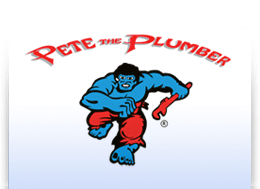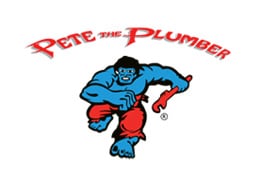
If it’s happening often, something needs fixing.
In most cases, it’s a temporary problem that can be fixed relatively simply by following some basic plumbing advice. If it’s a more serious problem that just won’t ease, you may need to call a professional.
Below we look at the main causes and ways to prevent clogged drains – and how to fix simple problems.
Prevention is the best cure for clogged drains
The key to preventing blocked drains is to understand the main reasons they happen.
If you find yourself nodding at any of the following, watch out! A problem may be just around the corner (or the u-bend to use a plumbing term).
The most common causes
It’s simple. Most blocked drains happen because of what people flush down the toilet or wash down the kitchen sink. This includes:
- Cooking fat: this coagulates and builds up, and the next thing you know you’ve got a huge blockage.
- Tampons/sanitary products: possibly the fastest way to plug drains because they absorb liquid, the strings get tangled and the blockage won’t dislodge.
- Dental floss: one piece of floss can snag onto something, another catches it, they catch something else, and then we have a blockage.
- Food: Large pieces of food should never be washed down the sink. They may sit in the pipes, too heavy to be properly washed away.
- Diapers: yes, unbelievably, we’ve seen diapers flushed down the toilet. Their sheer size should be your first clue not to flush and, if you need a second clue, how about the effort required to get one down the toilet?!
- Hair: very common in shower drains and bathtubs
- Paint: it’s thick and gummy and, like cooking fat, can coagulate at joints in the pipe. If you’re decorating the house, resist the temptation to flush!
Condoms: yes, they can actually balloon inside the pipes in your home, and the result is obvious.
So, the best prevention for clogged drains is to avoid doing any of the above!
Tools required for unclogging drains
Okay, we all make mistakes and we can’t be watching the children every second of the day. Things get flushed or washed down the sinks that have no place there.
What do you do?
Unclogging a drain starts with having the right tools for the job. You don’t need expensive and specialized plumbing tools but it’s a good idea to keep the following handy in your home:
- A plunger: great for clearing clogs from sinks, tubs, and toilets.
- A 25-foot cable auger (plumber’s snake): this is a long, flexible steel cable wound around a spool fitted with a hand crank, able to penetrate far down a drainpipe to clear a blockage.
- A pipe wrench.
If you can lay your hands on the following items, they may also come in useful for unclogging drains:
- A closet auger, which is specifically designed to fit through the tight curves of a toilet and is usually about three feet in length.
- A power auger, which is a serious piece of equipment designed to cut through any clog (you would need to rent this).
Common fixes for clogged drains
Kitchen sinks, toilets, and shower drains are the most common household fixtures to experience clogged drains.
There are slightly different fixes for each, based on the prime culprits for causing the blockage.
How to fix a clogged kitchen sink
Most minor blockages can be cleared with a plunger.
- Partially fill the sink with water.
- Work the plunger up and down vigorously several times and then quickly pull it off the drain opening – this should clear most minor blockages.
For best effects with a bath sink, stuff a rag into the overflow hole while you plunge the drain opening. For double-bowl kitchen sinks, block one drain opening while plunging the other one.
If the sink is still clogged, it’s time to venture underneath the sink.
Firstly. remove the sink trap with a pipe wrench or, if you have a PVC plastic trap, you should be able to unscrew it by hand. Then empty the water from the trap into a bucket and make sure that the trap isn’t causing the clog.
To get to work with your cable auger inside the drain, follow these steps:
- Remove the horizontal trap arm protruding from the stub out in the wall.
- Feed the cable into the stub out until it hits resistance (this is the blockage).
- Pull out around 18 inches of cable and then tighten the lock screw.
- Crank the handle clockwise while pushing forward.
- Repeat this process until the blockage is cleared, pulling out another 18 inches of cable if necessary.
- If the cable gets stuck, go counter-clockwise with the crank and pull back on the auger to release it – and then crank and push forward again.
- Remove the cable, replace the trap arm and trap, and turn on the hot water.
- Let the water run and check whether it drains.
- If it still seems blocked, debris may have settled into a loose blockage.
- Use a plunger to clear this simple blockage and then check that it is removed by running the hot water again.
How to fix a clogged toilet
The most common location of toilet clogs is at the top of the tight, up-curving trap.
Plunging is the obvious fix for a clogged toilet. Place the plunger over the hole in the toilet and create a seal, before working it up and down vigorously. This will force water at some pressure through the toilet, hopefully unclogging the drain pipe.
However, if that doesn’t work, it may be time to use a closet auger:
- Place the end of the auger into the bowl with the bent tip aiming upwards and hold the tool shaft steady.
- Crank and push down on the handle, causing the cable to snake up through the trap.
- Keep cranking until all of the cables have been unwound.
- Retrieve the cable by pulling up while cranking.
- Flush the toilet and this should clear out the drainpipe.
- If there is still a blockage, repeat the process once or twice (up to each side of the trap to clear any lingering blockages).
For further information on this, here is an extensive guide and more tips on how to use a plunger, how to diagnose your clog and simple steps to unclog your toilet.
What can I put down my drain to unblock it?
Some homeowners who cannot put their hands on a plunger or toilet snake may resort to other remedies to unclog a drain.
This usually involves a variety of household liquids and other substances, such as:
- Simple boiling water: this may clear a minor blockage.
- Half a cup of salt followed by boiling water: another possible remedy but unlikely to remove a serious blockage.
- A cup of baking soda followed by a cup of white or apple cider vinegar: creates a bubbling solution in the drain to potentially clear a clog after around 15 minutes.
- Half a cup of baking soda and half a cup of salt: left to sit in the drain for a few hours before flushing boiling water.
Sometimes, these remedies will unclog a drain but we prefer the mechanical approach because it is more certain to work.
When do you need to call a plumber?
Taking the steps to prevent blocked drains can help you avoid costly plumbing and clean-up bills.
If none of the blocked drain solutions described above work, you may have a bigger problem requiring a plumber.
Augers and plungers can probably clear 90 percent of household problems but unclogging a drain when a snake doesn’t work goes beyond the capabilities (and patience) of most homeowners.
Having Plumbing Troubles?
It’s time to call the professionals in. To troubleshoot any plumbing issue, call Pete the Plumber at (403) 257-1766.

